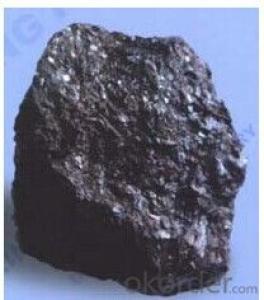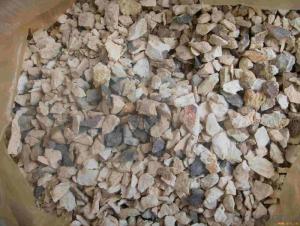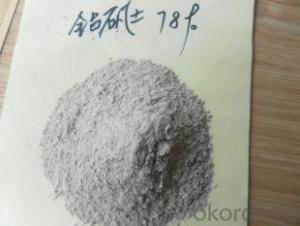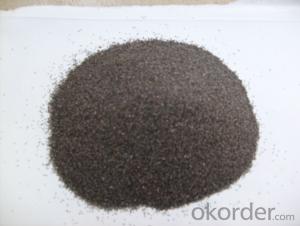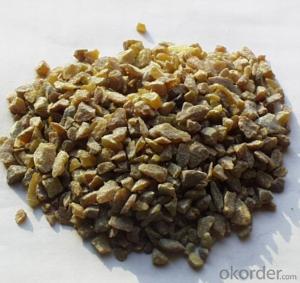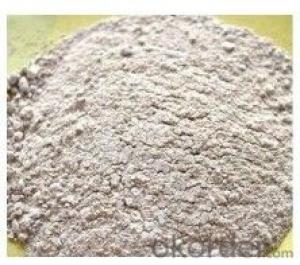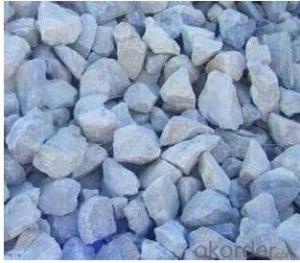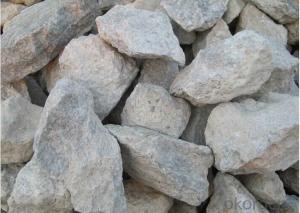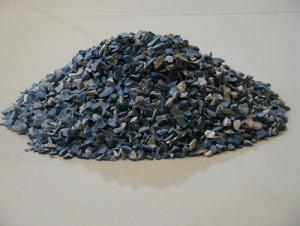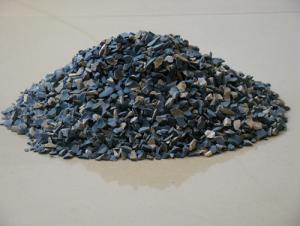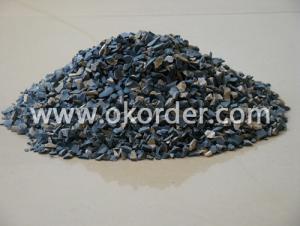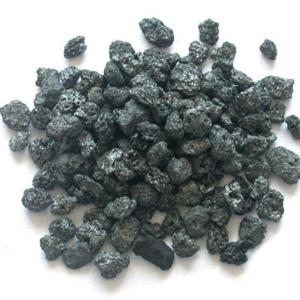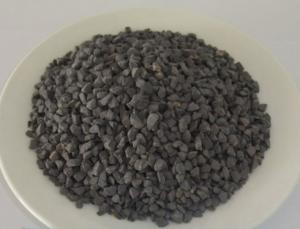Raw Materials for Refractory:Fused Magnesite Chrome Sinter
- Loading Port:
- China Main Port
- Payment Terms:
- TT OR LC
- Min Order Qty:
- -
- Supply Capability:
- -
OKorder Service Pledge
OKorder Financial Service
You Might Also Like
Specifications
Fused magnesite chrome sinter
1.Low Chrome ,Medium Chrome ,High Chrome
2.high bulk density
3.offer free sample
Fused magnesite chrome sinter
Finished Fused Mag-Chrome is made of high-quality chrome concentrate and high purity magnesite at accurate proportion, adjusting Cr2O3 content from high chrome to low chrome, in order to achieve low impurity content and high bulk density, as well as meet different needs. after molding into brick with our clincker, it is widely used in secondary refining device for RH,VOD,AOD and non-ferrous metallurgical furnace.
| ||||||||||||||||||||||||||||||||||||||||||
| |||||||||||||||||||||||||||||||||||||||||||||||||||||||||
| ||||||||||||||||||||||||||||||||||||||||||||||||||||||||
- Q: Can quantitative feeder be used in refractory plant? Thank you
- Well, can the Weifang Sanyou automation equipment production chain plate feeder is fully applicable to the measurement and control of boring high temperature, chain plate feeder with 16 4-5MM manganese plate.
- Q: What is the use of refractory?
- Refractories mainly provide stable working environment for high temperature operation , such as metallurgical industry (steel ladle, hot-metal bottle, torpedo car and most places directly in contact with molten steel and iron), chemical industry (coke oven cokeing, dry quenching engineering) and building materials industry (lime kiln and glass kiln)
- Q: How much is the duration of fire resistance of the porous brick shale?
- It depends on its formula since the highest temperature varies from formula. For example, the temperature of common bricks is 900℃, if the lime in it accounts for most part, then the temperature could reach 1050℃; if coal ash accounts for over 40%--50%, then the temperature could amount 1050℃--1150℃.
- Q: How should refractory cement be used?
- Insulation fire mortar: It is used as a protective refractory layer in the kiln head burner, as a refractory material in some parts of preheater, and it is generally constructed by grouting. b: Insulation fire mortar: It is used to repair the deformed plane of the kiln shell, or for thermal insulation of the roof in the cooler. Refractory mortar: It is also known as thermosetting fire mortar, mainly used in brick masonary. When using, we must add the glassy water to stir. (silicic acid sodium, water, NaSiO3, H2O).
- Q: How to prolong the furnace age of Induction furnace by using fireproof materials?
- magnesia solid materials have thermal endurance and erosion/ performance and its change of temperature is likely to cause cracks. properties of materials (aluminum) in such case have to be taken into consideration.
- Q: Does refractory belong to stone, building materials or other?
- It belongs to building materials.
- Q: who knows how to classify the fire resistant levels of fireproofing material?
- Materials used in construction are called construction materials. The combustion performance of construction materials refers to all physic and chemical changes happened when burning or contacting fire, the properity is measured by combustibility of material surface and flame transmission, heating, smoke,charring, weightlessness, and the producing of toxicity resultant. Our national standard GB8624-97 classifies the combustion performance of construction materials into following several levels. Class A: Incombustible building material, class B1: Nonflammable building material, class B2: Combustible?building?materials, class B3: Inflammability construction materials, generally speaking: first fire resistant level construction is the mixed construction of reinforced concrete structure or brick wall and steel concrete structure; second fire resistant level construction is the steel structure roof truss, reinforced concrete column or mixed structure made by brick wall; third fire resistant level construction is the wood and brick made by wooden roof and brick wall; fourth fire resistant level one is the combustible?structure made by wooden roof, hard-comnustible component wall.
- Q: What kind of refractory bricks material is best?
- In general, aluminous fireclay brick is used. GB / T 3994-2005 insulating fireclay brick. Bricks with good material are as follows: high-grade thermal insulation refractory brick, GB/T 3995-2006 high alumina thermal insulation refractory brick. Model is A13, and the texture is aluminium oxide. A13 50u, high grade heat insulating brick B5; intermediate heat insulating brick B2, etc.
- Q: Does refractory belong to metallurgical auxiliary materials?
- Refractory includes metallurgical auxiliary materials.
- Q: what is the specs of thermal insulation refractory slab ?
- fireproof?panel is also called refractory slab, which refers to a layer of veneer. Its thickness is generally about 0.8 mm and there is a veneer made after compression of surface layer of paper, colored paper and multilayer kraft paper. Wear-resistant, heat-resistant and fire-resistant properties, scratch resistant and easy to clean, rich colors and good stability.
Send your message to us
Raw Materials for Refractory:Fused Magnesite Chrome Sinter
- Loading Port:
- China Main Port
- Payment Terms:
- TT OR LC
- Min Order Qty:
- -
- Supply Capability:
- -
OKorder Service Pledge
OKorder Financial Service
Similar products
Hot products
Hot Searches
Related keywords
